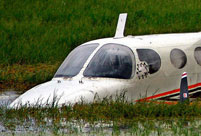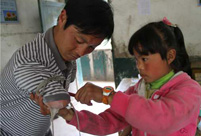BEIJING, Oct. 22 (Xinhua) -- The Information Office of the State Council, China's cabinet, on Tuesday published a white paper on the development and progress of Tibet.
Following is the full text:
Development and Progress of Tibet
Information Office of the State Council of the People's Republic of China
October 2013
Contents
Foreword
I. The Development and Progress in Tibet Is the Inevitable Result of History
II. Economic Growth and Improvement of the People's Livelihood
III. Political Progress -- the People Are the Masters of Their Own Fate
IV. Cultural Preservation and Freedom of Religious Belief
V. Social Changes and Development of All Undertakings
VI. Environmental Protection and Ecological Improvement
Concluding Remarks
Foreword
Tibet is located in the southern part of the Qinghai-Tibet Plateau and stands at the southwestern border of China. It is an autonomous region of the People's Republic of China.
Tibet has been an integral part of China since ancient times. Prior to the 1950s, Tibet was a society of feudal serfdom under theocratic rule, a society characterized by a combination of political and religious powers. Government officials, aristocrats and monasteries collectively maintained tight control over Tibet's resources and wealth, and the Tibetan people lived in dire misery without any freedom. At that time, Tibet was as dark and backward as medieval Europe.
The founding of the People's Republic of China in 1949 marked Tibet's entry into modern civilization. After a series of important historical stages, from its peaceful liberation and democratic reform to the establishment of the autonomous region and the reform and opening-up drive, Tibet has steered itself into a fast lane of development together with the rest of China. Half a century later, Tibet is a world totally different from its old self before the 1950s. The Tibetan people have gained freedom, equality and dignity, and are fully enjoying the fruits of modern civilization. They are working hard in unison toward the building of a united, democratic, affluent, culturally and ethically advanced and harmonious socialist society in the Tibet Autonomous Region.
The development and progress in Tibet is in accord with the rules for the development of human society, and reflects the mutual aspirations of the people of all ethnic groups in Tibet. It is the natural result of the overall development and progress of China as a whole. The development and progress of Tibet mirrors the victory of human society' s enterprising spirit and creativity in the quest for justice and happiness, and has proved the inevitability of history.
【11】 【12】 【13】 【14】 【15】 【16】 【17】 【18】 【19】 【20】
【21】 【22】 【23】

 No news of survivors in Lao Airlines crash
No news of survivors in Lao Airlines crash Five fighters in flight training
Five fighters in flight training London mayor hails free trade, subway system on China tour
London mayor hails free trade, subway system on China tour Different eye catching shows at housing fairs in China
Different eye catching shows at housing fairs in China Chalk it up to great courage
Chalk it up to great courage Tibetan girl helps mobilize volunteers onlin
Tibetan girl helps mobilize volunteers onlin Lingerie show dazzles Wuhan Motor Show 2013
Lingerie show dazzles Wuhan Motor Show 2013  Chinese screen goddesses from Beijing Film Academy
Chinese screen goddesses from Beijing Film Academy  Weekly Sports Photos
Weekly Sports Photos Bayi Parachute Team of PLA Air Force
Bayi Parachute Team of PLA Air Force World has never been dark-- a blind kid’s life in Tibet
World has never been dark-- a blind kid’s life in Tibet Change to law may make it easier to sue polluters
Change to law may make it easier to sue polluters UNESCO world heritage site: Montale Tower
UNESCO world heritage site: Montale Tower U.S. Senate leader announces bipartisan deal
U.S. Senate leader announces bipartisan deal Fiber-optic wedding dress show shinning in Suzhou
Fiber-optic wedding dress show shinning in Suzhou Day|Week|Month